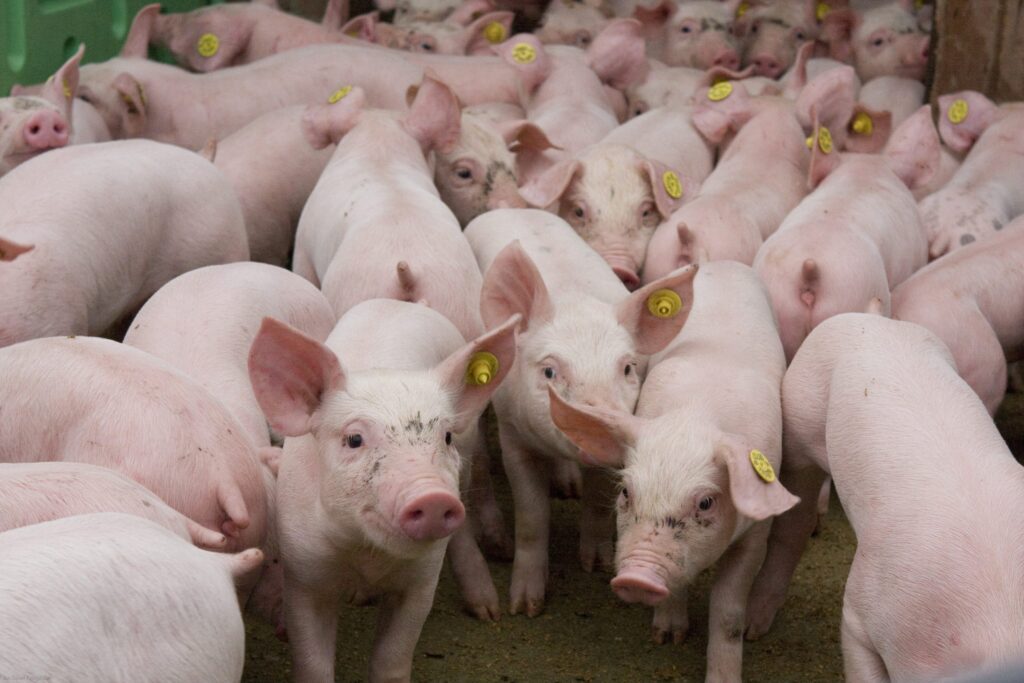Poor Pig Welfare Leads to Low Quality Pork

There is a direct relationship between how pigs are raised in the farm, transported, slaughtered and the quality of pork that we consume.
According to a collaborative study released by World Animal Protection, International Livestock Research Institute (ILRI) and University of Nairobi, the quality of pork is largely determined by how the pig is raised in the farm, transported, and subsequently slaughtered.
The study titled “Animal welfare and food safety in the Nairobi pork value chain” was conducted in a leading slaughterhouse in Nairobi between 5th January and 4th March 2021. It sought to collect information on where the pig was farmed, how it was transported, and gross lesions on the live animal and the carcass.
The findings shows that a quarter (25.83%) of the pork produced by the slaughterhouse, within the study period, was of poor quality. Almost all (99%) the pigs were poorly stunned and died in pain. The stunning voltage was found to be 0.3-0.4 Amperes against the internationally recommended 1.3 Amperes.
The study further found out that half (52%) of the pigs were kept for longer than 24 hours between time of purchase and slaughter, leading to the further degradation of the meat quality. 20% of the pigs were mixed from different farms, leading to fighting as the animals tried to establish a social order resulting in injuries. Almost a third (27.7 %) of the pigs were poorly transported e.g., tied to a motorbike causing further injuries which ultimately affect the quality of meat.
“This study raises critical concerns regarding animal welfare in relation to what lands on our tables and offers solutions that need to be implemented by the pig industry. Pigs are sentient and ought to be treated humanely during production, transportation and slaughter. Neglecting this leads to animal cruelty and suffering which has an economic impact along the value chain.” Says Dr. Victor Yamo, Farming Campaigns Manager at World Animal Protection.
Below are the study findings per thematic area.
Transportation
Pigs were strapped onto motorbikes and those transported using vehicles were overloaded. Most were kept for more than 24hours in the lairage before slaughter.
Strapping pigs onto motorbikes and overcrowding causes injuries, such as lacerations, bruises and fractures leading to down grading of the meat, which translates to reduced income/profit to the farmer or trader.
Pigs should not be kept for more than 18 hours without food and water. Keeping them for a longer time than that leads to the animal utilizing its energy reserves to sustain normal body functions causing weight loss hence reduced meat to sell. Meat obtained from a stressed pig tends to lose excess water as compared to non-stressed pigs. The meat weighs less leading to less income/profit.
Identification
Most live pigs were painfully marked on the ears with sharp objects such as nails for purposes of identification at the lairage and after slaughter.
This process causes intense pain, causing physical injury and subsequent fear to the pigs. The identification lacerations (cuts) create avenues for entry of pathogens such as bacteria. Nevertheless, this is a key source of stress to the animal and as the animal fights back it becomes difficult to handle. Slaughterhouses should shift to a non-invasive methods of marking pigs such as with paint or markers
Stunning
The electrodes of the stunning device were dirty, old, and corroded. The stunning current was 0.3 Amperes, which is below the recommended current of 1. 3 Amperes. Nearly all pigs were incorrectly restrained and stunned. Some were stunned as they moved before slitting the neck.
Stunning is purposed to render the animal unconscious before slitting the neck. Improperly stunned animals end up being bled when still alive, able to feel pain and struggle. As the animal is still conscious and normally breathing, it inhales blood from the cut site (throat region) into the lungs. This scenario lowers the meat quality, giving a poor aesthetic appearance and shortens the shelf life of the meat. Proper restraining of pigs during stunning process ensures the rods are placed on the right site and also prevents electric shock to humans.
Pigs should be properly restrained before stunning. The stunning device should be clean, well maintained well positioned on the neck at the base of the ears. Stunning should be done with a clean and well-maintained stunning device with a current of 1.3 Amperes. The electrodes on the stunning gun have to be cleaned daily for effective transmission of current.
Additionally, farmers need to treat animals only when sick which should be done by a registered animal health practitioner. They should not self-prescribe drugs or give drugs to animals when not sick. Traders/buyers should ensure they get the treatment history of the pigs before they buy. They should buy pigs that are not under treatment and where they know that the correct drug withdrawal period has passed since the last treatment.





